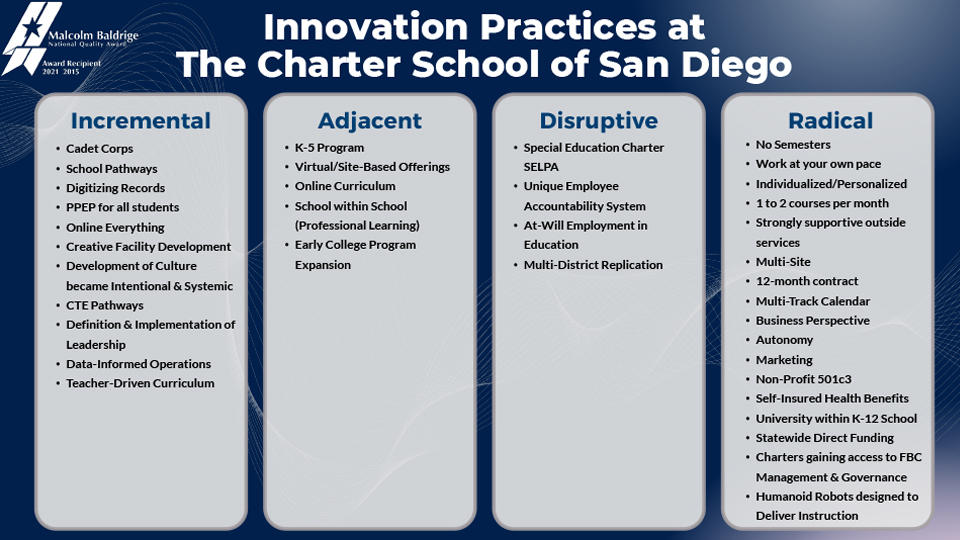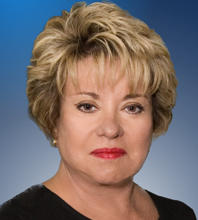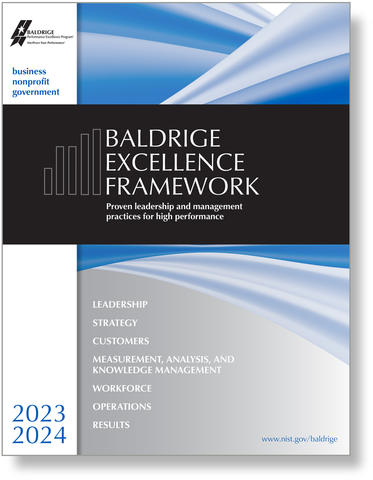Blogrige
The Official Baldrige Blog

The Charter School of San Diego's Innovation Practices slide from its Quest for Excellence innovation presentation.
Five-Part Leadership Blog Series
Senior leaders of five recent Baldrige Award recipients representing diverse sectors of the U.S. economy—The Charter School of San Diego (CSSD), Elevations Credit Union, Guidehouse (formerly PricewaterhouseCoopers Public Sector), Memorial Hermann Sugar Land Hospital, and Stellar Solutions--presented insights on how they guide their high-performing organizations to innovate at the Baldrige Performance Excellence Program’s 34th Quest for Excellence® conference in April 2023. Following are highlights of the presentation by Mary Bixby of CSSD.
Disruption and Innovation: “We Transform Lives and We Are Baldrige”

“I’m here to tell you that the universe is asking us to innovate,” Mary Bixby, founder, president, and chief executive officer of two-time Baldrige Award recipient The Charter School of San Diego, told the audience at the 34th Quest for Excellence® conference.
According to Bixby, organizations today are not just challenged to cope with rapid change; they also need to create that change using innovation.
“How We Do Innovation”
At The Charter School of San Diego, part of Altus Schools, innovation is defined as “a new product, idea, process, or service that increases value for the stakeholders and can greatly improve the meeting of need for the school’s main market,” according to Bixby.
Creating a culture is the first step to innovation, she said, recommending that leaders talk to their people about innovation and why it’s important. She then shared additional steps to innovate:
- dream it,
- articulate it,
- bring it to the team,
- create the culture of innovation,
- develop a plan collaboratively,
- execute the plan,
- research the progress and outcomes,
- use comparable data (this part is all about Baldrige, she said), and
- integrate the plan into your organization (if the plan is worthy).
“There’ s nothing wrong with going over a wonderful idea and just concluding that it isn’t the right time yet or the right place,” Bixby said. “This is something you do all of the time. . . .
When you’re working with the Baldrige framework, you’re working at a much higher level . . . [to] get the right people at the right place and the right time to create the outcome that’s desired . . . to create innovation."
Bixby defined four innovation practices at The Charter School of San Diego, noting that when contemplating innovation and change, time should be set aside to contemplate and ponder ideas.
Incremental: Continuous Improvement
Bixby said that organizations attending the Quest best-practice-sharing conference and others working at continuous improvement are already doing innovation, the first step of which she defined as continuous improvement.
“If you even think about Baldrige, then you are thinking about continuous improvement,” she said. “We’re trying to find better ways, faster ways, more cost-effective ways. . . . We know that we’ve got higher expectations than ever, and it doesn’t matter which sector you are in. We know that we are more regulated than ever but always we are looking for ways that we can improve.”
Adjacent Innovation
The second level of innovation, Bixby said, is adjacent innovation: “using existing capabilities (like technology or knowledge) to appeal to a new audience or enter a new market.”
The Charter School of San Diego is an anchor school and has been replicated nine times, from one school with over 3,500 students to multiple schools with 8,700 students, Bixby said.
The organization has worked at refining an instructional model that at its core is all about kids. But she noted that the model is supported by many others who are not directly involved in instruction; for example, facilities, human resources, finance, and other departments.
“One of my first big lessons from Baldrige,” Bixby said, “is at first, I thought . . . what am I going to learn from hospitals and businesses? . . . We have come to honor the fact that we can not only learn but share some of what we do. . . . My team could go into any sector and share what they do to improve.”
Disruptive Innovation
Last year, The Charter School of San Diego graduated just over 1,000 students who would never have graduated, Bixby said, adding, “We did it by being disruptive.”
She defined disruptive innovation as “an action taken by a smaller company to disrupt larger, existing competitors and its industry over time.”
“It’s taken 30 years, but from the beginning, we made our sector uncomfortable in a nice courteous, polite way,” said Bixby. “We are disruptive, and we have impacted not only our state. . . . We’ve impacted the country. And [people] come from everywhere to see what we are doing and how we are doing it.”
Bixby said the reason they have been disruptive is to find better ways to provide education. For example, she said they wanted a school with no semesters, where a student could take just one or two classes at a time, at a pace that worked for him or her. The school was not interested in just getting students to pass with “D” grades; instead, a teacher facilitates learning in a personalized way for each student in a small school without classrooms. Also, they wanted a school that can be found in neighborhood storefronts to make access easy for students.
Radical Innovation
Bixby said the fourth type of innovation is radical innovation that changes everyone’s lives, and this is the type of innovation that brought us TV, Netflix, and smart phones, for example.
We believe we are changing the way education is offered in America, said Bixby. “Not every school will have the same model that we have, but . . . we can inspire creativity where every student has an individual plan, and we do everything that we can to help them live and realize that plan. We all have that potential.”
Bixby concluded her presentation by acknowledging that The Charter School of San Diego believes that success and innovation are habits that can be learned and achieved.
“We are teachers. We transform lives and we are Baldrige,” she said.
Five-Part Leadership Blog Series
Upcoming Blogs
Leading for Innovation, Part 2: Insights from Elevations Credit Union’s Gerry Agnes
Leading for Innovation, Part 3: Insights from Guidehouse’s Scott McIntyre
Leading for Innovation, Part 4: Insights from Memorial Hermann’s Malisha Patel
Leading for Innovation, Part 5: Insights from Stellar Solutions' Janet Grondin

Baldrige Excellence Framework®
The Baldrige Excellence Framework® has empowered organizations to accomplish their missions, improve results, and become more competitive. It includes the Criteria for Performance Excellence®, core values and concepts, and guidelines for evaluating your processes and results.
Purchase your copy today!
Available versions: Business/Nonprofit, Education, and Health Care





